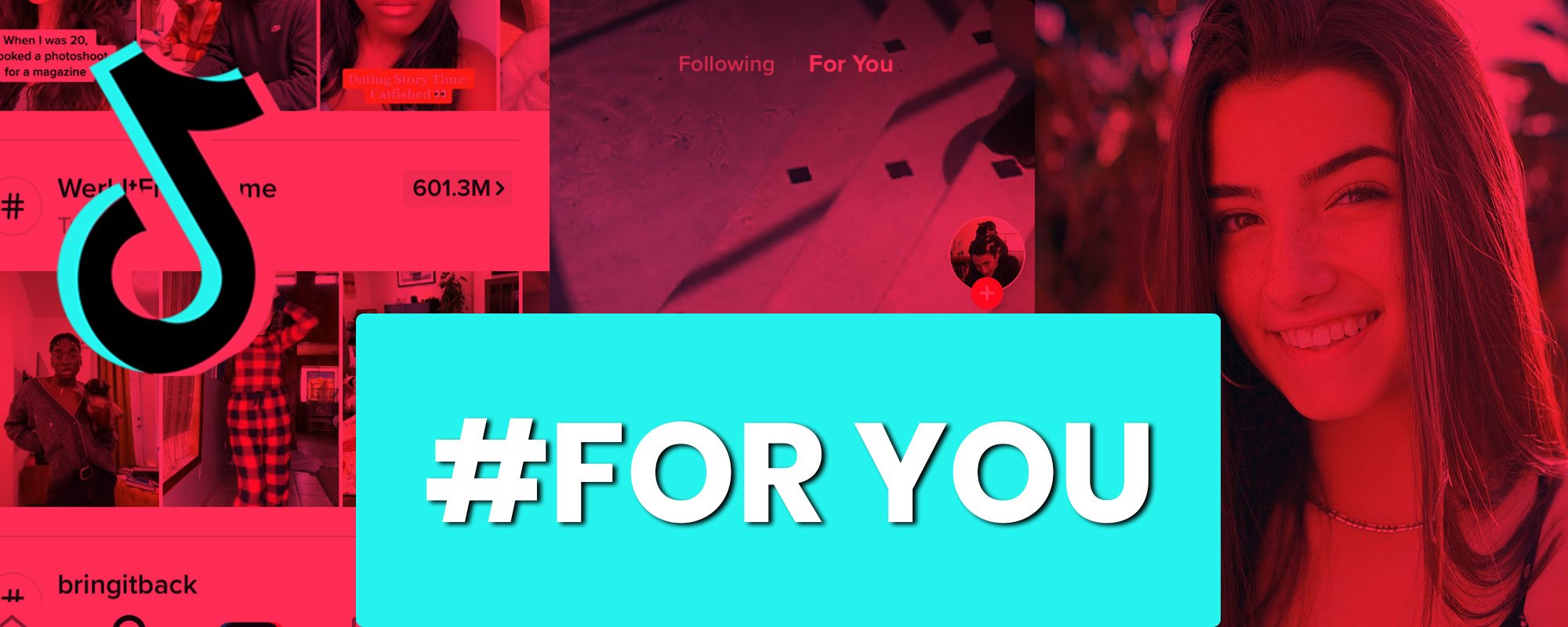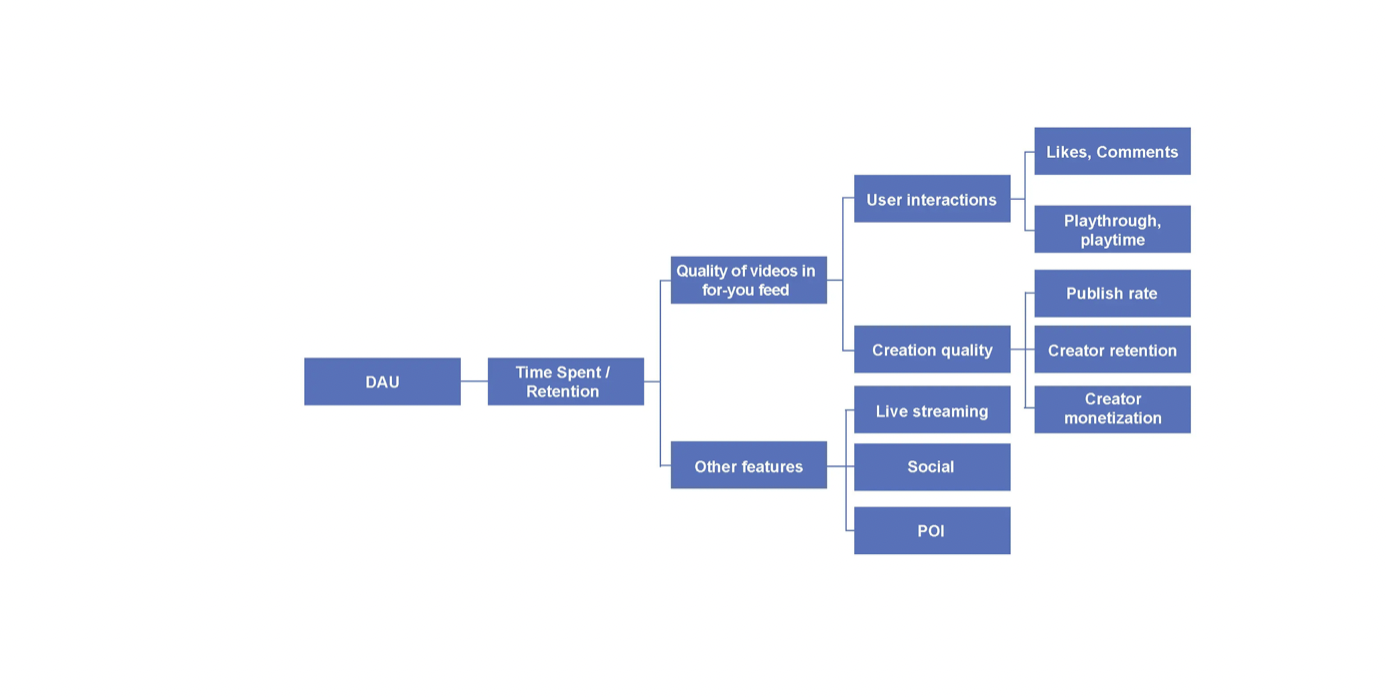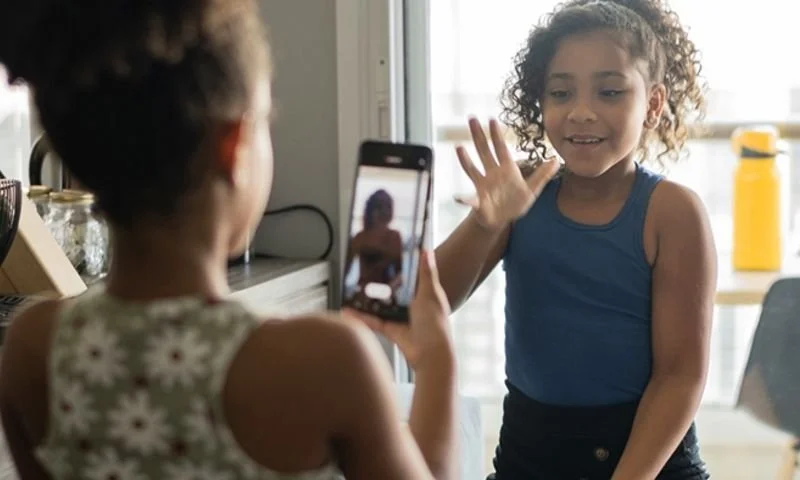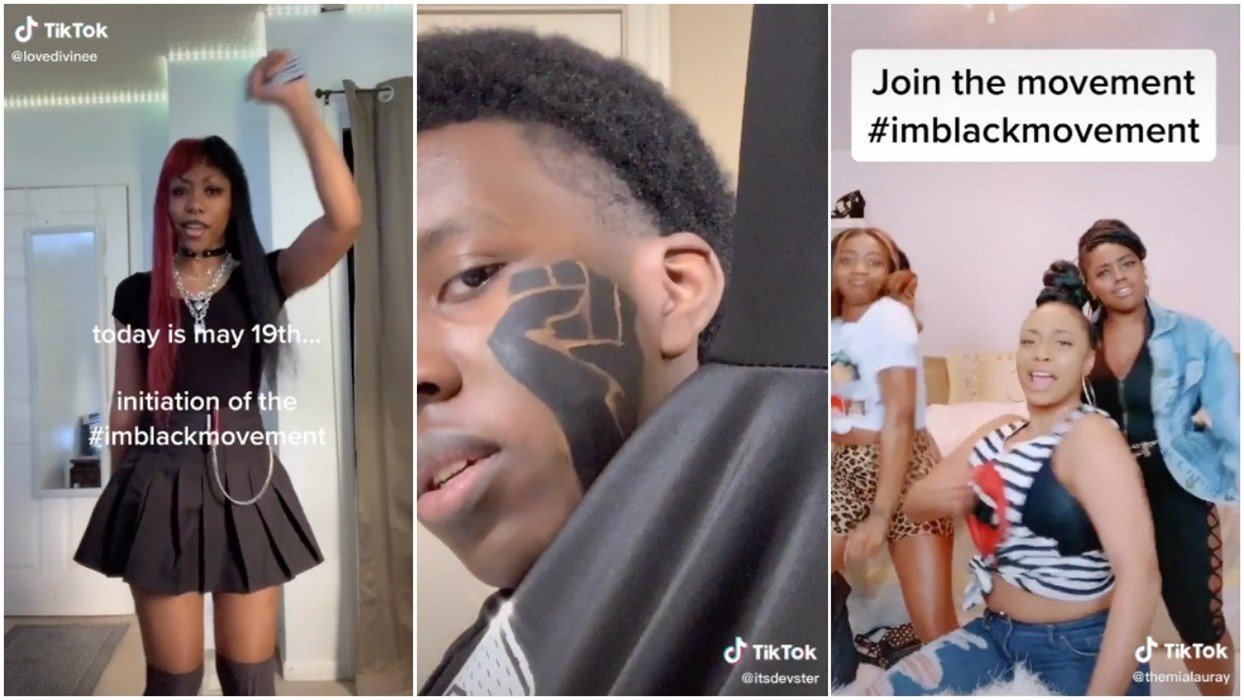(Trigger Warning: This article briefly mentions suicide and self-harm.)
The latest controversies surrounding TikTok are no secret: biased algorithms, censored content, & intensive personal data collection, to name just a few. But how exactly are these controversies posing risks for arts organizations and users? Why should the arts industry care? Buckle in (especially YOU, arts marketers) because the impacts may change the future of social media and marketing moving forward.
Image From: https://unsplash.com/s/photos/tiktok
Tiktok is causing chaos
As members of the arts and technology community, the issues recently raised in the media surrounding TikTok are relevant for multiple reasons. First, everyone who uses technology exposes personal data, therefore data privacy affects everyone who uses the internet and any related software or apps. Some issues being raised by watchdogs include data collection, censorship of content through biased algorithms, and exposure of inappropriate content to underaged users. As TikTok is increasingly used by arts organizations as a pathway to engage audiences, the business of using this tool is coming into question — both how it is used and if it should be used at all, especially with respect to TikTok and its impact on younger audiences. Second, arts marketers must realize that the controversy surrounding TikTok also affects your strategies in how you reach your customers. Should your organization even be present on TikTok, or will it be a missed opportunity to reach a large, younger audience? This is the first part of a series of articles. This article focuses on the algorithms and AI used by TikTok, the ethical controversies that result, and privacy issues specific to TikTok, although the issues are relevant for all similar apps. The second part describes what has been happening in the media to help demonstrate just how much this issue affects the arts and culture industries.
the main concerns posed by the u.s. government
Since its release in 2016, TikTok, a short-form video creation app owned by Chinese company ByteDance, has grown quickly to be one of the most used social media tools for users across many generations. The app allows its users to create videos that range in duration from 3 seconds to 10 minutes, with filters, music, and sounds that are available to complement each post. In 2022 TikTok’s global users surpassed over 1 billion monthly with most of them averaging 1.5 hours per day on the app. Statistics show that around 167 million TikTok videos are watched every minute, and the app has been installed on devices over 3.5 billion times worldwide. In the Chinese market, TikTok’s twin is known as Douyin which also has gained popularity across the nation. However, while popular, many controversies have surrounded TikTok since its release in the United States concerning the foreign ownership of the app and privacy concerns. (It is important to note that controversies exist in other countries, but this article will focus on those in the U.S.) When it comes to privacy and security, many critics are focused on data collection practices and the potential ties to the Chinese government as a form of spyware. It was released in April of 2022 through TikTok’s Privacy Policy that their Chinese employees would have access to specific data belonging to TikTok’s European users, being vague on the specific information being collected. A recent article from Forbes stated, “Over the last year, TikTok has been touting its plans to cordon off Americans’ data from China in a $1.5 billion undertaking called Project Texas. That initiative has been central to negotiations with the Biden administration on a deal that would allow the wildly popular app to continue operating in the U.S., despite longstanding national security concerns about its Chinese ownership and the potential for the platform to be used to surveil or influence the 150 million Americans using it.” Especially since this announcement, fears have heightened in the United States about national security and data privacy leakage with rumors that TikTok may become banned in the near future.
It is clear that the accusations of TikTok being a threat to national security is not only a concern within the United States, but within numerous international governments as well. How exactly is the United States government planning to combat these issues? There are various issues that the United States government and the Biden administration may face if they decide to officially pursue the ban of TikTok, as described in Biden and Congress Want To Ban TikTok:
“The challenges that confront Washington as it works to rein in TikTok compound on each other. Between the company’s steep price tag, antitrust concerns, and expected resistance from Beijing, almost no experts believe Washington will be able to force ByteDance, TikTok’s Chinese owner, to sell the app. If divestiture fails, the government will need new authorities from Congress to prevent getting laughed out of court when it attempts a direct ban — and there’s no guarantee lawmakers can get on the same page to grant those powers in time for Biden to use them.”
This isn't the first time that the United States government has tried to ban TikTok and other Chinese apps, as Donald Trump attempted to do the same thing in 2020 through an executive order. This time around, though, the Biden administration is going about the ban in a different manner by proposing a bill to Congress that would give the president the ability to ban any foreign apps. Given the 150 million American users and the countless lobbyists that TikTok has hired since the first attempted coup. A possible solution to the madness would be for a U.S. company to gain ownership of the app by purchasing it for the mere $40 billion that it is worth. However, concerns of the resulting potential monopoly are brought into question when it is suggested that tech giants like Google and Meta purchase TikTok. It would be more realistic if companies like Amazon or Microsoft were to purchase the app, given the fact that they own a smaller portion of social media shares in the market and therefore would not be at a large risk of being labeled as a monopoly. These concerns seem to be unfounded. For lack of a better term, it appears that no company wants to touch TikTok with a 10-foot pole. Overall, it is apparent that the TikTok controversy is an uphill battle for the U.S. government, especially concerning the obstacles that current policy upholds with the first amendment and various other precedents. As described in the article, “When federal judges blocked the Trump administration’s TikTok ban in 2020, they did so in part based on violations of the Berman amendments — obscure but important 30-year-old provisions in the International Emergency Economic Powers Act that allow for the free flow of ‘informational material’ from adversarial nations.”
From an international perspective, China has countered the US action by claiming that the United States is spreading misinformation concerning the data privacy concerns of the app. The main concerns of the FBI and the Federal Communications Commission is that ByteDance has and may again in the future share user data (i.e. browsing history, location, biometric identifiers) as well as personal data with the Chinese government. But what has happened so far with this potential ban in other countries? According to Why TikTok’s Security Risks Keep Raising Fears:
“British authorities said they are banning TikTok on government-issued phones on security grounds, following similar moves by the European Union’s executive branch, which temporarily banned TikTok from employee phones. Denmark and Canada have also announced efforts to block it on government-issued phones. Last month, the White House said it would give U.S. federal agencies 30 days to delete TikTok from all government-issued mobile devices. Congress, the U.S. armed forces and more than half of U.S. states had already banned the app.”
TikTok spokesperson, Maureen Shanahan, spoke for the company surrounding the security concerns by ensuring “transparent, U.S.-based protection of U.S. user data and systems, with robust third-party monitoring, vetting, and verification.” TikTok had pledged in June that it would begin to store all data on U.S. servers controlled by Oracle, a Silicon Valley collaboration that TikTok had established to avoid a ban back in 2020, yet they are still fighting the same battle today. However, it has been proven that TikTok continues to store a backup data set from its own servers in Singapore, claiming that all this information will be deleted. To better understand the storage of data and the processes that TikTok uses in its operations, TikTok CEO Shou Zi Chew testified in front of the House Energy and Commerce Committee last month to plead TikTok’s case.
tiktok’s brilliant algorithm: can it read your mind?
Before digging deeper into the security and data privacy policy that TikTok contains, it is important to understand the logic behind the unique algorithm that TikTok uses to personalize the experience of each individual’s “For You Page,” (FYP) a feed that is entirely personalized based on the user's likes and personality. TikTok has been noted to fill this feed with uncanny accuracy. How exactly is TikTok able to determine this? The viewership of content by users is broken down into four main goals for TikTok’s algorithm: user value, long-term user value, creator value, and platform value. The graphic below as provided by the New York Times’ article “How TikTok Reads Your Mind” displays the data that is used by TikTok to gain an accurate representation of the interests of the account user, specifically by looking at time spent and retention on each video type, the quality of videos in the FYP, user interactions, creator monetization, etc.
“Each video a kid watches, TikTok gains a piece of information on him. In a few hours, the algorithm can detect his musical tastes, his physical attraction, if he’s depressed, if he might be into drugs, and much other sensitive information.” ”
This information was taken from a document written by TikTok’s engineering team in Beijing to explain “TikTok Algo 101,” as the NY Times explains, “The document offers a new level of detail about the dominant video app, providing a revealing glimpse both of the app’s mathematical core and insight into the company’s understanding of human nature — our tendencies toward boredom, our sensitivity to cultural cues — that help explain why it’s so hard to put down.” For most users who do not create on the app and use it solely for entertainment purposes, the app is shockingly accurate with its ability to know its user with articles being written like “The TikTok Algorithm Knew My Sexuality Better Than I Did.” TikTok has commented on this by explaining how its recommendation system takes into account likes, comments, and video information like captions, sounds, and hashtags to target specific audiences with specific content. Oftentimes the algorithm of TikTok can lead its users down a dangerous rabbit hole with little understanding of how long they have been scrolling. Depending on the types of videos that the user interacts with, a user can find themselves surrounded by sad and depressing videos, sometimes even those centered around suicide and self-harm, even though TikTok claims to be dedicated to targeting this content and taking it down immediately. Because of the potential for personal harm and similar issues and the impossibility of TikTok to accurately and quickly take down videos like these, it is no surprise that many professionals in the field feel that TikTok’s algorithm poses a social threat, especially to children and minors. The article goes on to quote Guillaume Chaslot, the founder of Algo Transparency, a group based in Paris that has studied YouTube’s recommendation system and takes a dark view of the effect of the product on children into account:
“‘I think it’s a crazy idea to let TikTok’s algorithm steer the life of our kids,’ he [Chaslot] said. ‘Each video a kid watches, TikTok gains a piece of information on him. In a few hours, the algorithm can detect his musical tastes, his physical attraction, if he’s depressed, if he might be into drugs, and much other sensitive information. There’s a high risk that some of this information will be used against him. It could potentially be used to micro-target him or make him more addicted to the platform.’”
the privacy policy that confesses it all
TikTok’s Privacy Policy was last updated on May 22, 2023, and includes a separate Children’s Privacy Policy for users under the age of 13. This policy lays out what information they collect, how they use user information, how they share user information, user rights, user choices, data security and retention, children and teens, other rights, and privacy policy updates. According to the vaguely written Privacy Policy section of Information Collected, TikTok states, “We may collect information from and about you, including information that you provide, information from other sources [author enhanced], and automatically collected information.” The Information Provided section is a bit more detailed, listing that the user provides the following (as taken directly from the policy):
Account and profile information, such as name, age, username, password, language, email, phone number, social media account information, and profile image.
User-generated content, including comments, photographs, live streams, audio recordings, videos, text, hashtags, and virtual item videos that you choose to create with or upload to the Platform (“User Content”) and the associated metadata, such as when, where, and by whom the content was created. Even if you are not a user, information about you may appear in User Content created or published by users on the Platform. When you create User Content, we may upload or import it to the Platform before you save or post the User Content (also known as pre-uploading), for example, in order to recommend audio options, generate captions, and provide other personalized recommendations. If you apply an effect to your User Content, we may collect a version of your User Content that does not include the effect.
Messages, which include information you provide when you compose, send, or receive messages through the Platform’s messaging functionalities. They include messages you send through our chat functionality when communicating with merchants who sell goods to you, and your use of virtual assistants when purchasing items through the Platform. That information includes the content of the message and information about the message, such as when it was sent, received, or read, and message participants. Please be aware that messages you choose to send to other users of the Platform will be accessible by those users and that we are not responsible for the manner in which those users use or share the messages.
Information, including text, images, and videos, found in your device’s clipboard, with your permission. For example, if you choose to initiate information sharing with a third-party platform, or choose to paste content from the clipboard onto the Platform, we access this information stored in your clipboard in order to fulfill your request.
Purchase information, including payment card numbers or other third-party payment information (such as PayPal) where required for the purpose of payment, and billing and shipping address. We also collect information that is required for extended warranty purposes and your transaction and purchase history on or through the Platform.
Your phone and social network contacts, with your permission. If you choose to find other users through your phone contacts, we will access and collect information such as names, phone numbers, and email addresses, and match that information against existing users of the Platform. If you choose to find other users through your social network contacts, we will collect your public profile information as well as names and profiles of your social network contacts.
Your choices and communication preferences.
Information to verify an account such as proof of identity or age.
Information in correspondence you send to us, including when you contact us for support.
Information you share through surveys or your participation in challenges, research, promotions, marketing campaigns, events, or contests such as your gender, age, likeness, and preferences.
The Information From Other Sources section lays out what is collected as well (also taken directly from the policy):
If you choose to sign-up or log-in to the Platform using a third-party service such as Facebook, Twitter, Instagram, or Google, or link your TikTok account to a third-party service, we may collect information from the service–for example, your public profile information (such as nickname), email, and contact list.
Advertisers, measurement and other partners share information with us about you and the actions you have taken outside of the Platform, such as your activities on other websites and apps or in stores, including the products or services you purchased, online or in person. These partners also share information with us, such as mobile identifiers for advertising, hashed email addresses and phone numbers, and cookie identifiers, which we use to help match you and your actions outside of the Platform with your TikTok account. Some of our advertisers and other partners enable us to collect similar information directly from their websites or apps by integrating our TikTok Advertiser Tools (such as TikTok Pixel).
We may obtain information about you from certain affiliated entities within our corporate group, including about your activities on their platform.
We may receive information about you from others, including where you are included or mentioned in User Content, direct messages, in a complaint, appeal, request or feedback submitted to us, or if your contact information is provided to us. We may collect information about you from other publicly available sources.
The Additional Information Collected section lays out in detail that the app collects information concerning usage information, device information, location data, image and audio information, metadata, and cookies.
Image From: https://www.tiktok.com/legal
It is known that many people do not read Privacy Policies due to a lack of time, interest, or knowledge. As discussed by Priscilla Sherman’s article The Privacy Risks of TikTok: Why This Invasive App is So Dangerous from VPNOverview:
“Considering the high levels of government censorship and surveillance in China, many people worry that ByteDance might be collecting data from TikTok users and passing it on to the Chinese government. To a certain extent, these concerns are fueled by xenophobia and anti-China sentiment. After all, the United States government itself is one of the worst offenders in the world when it comes to obtaining user data. However, the United States has several safeguards and laws in place that somewhat limit the government’s influence. China doesn’t have such safeguards. Since it’s very difficult to get around the Great Firewall of China, independent privacy watchdogs are pretty much non-existent in China. Therefore, it’s important to take privacy concerns about TikTok seriously.”
Online groups like Hacker Group Anonymous raise questions about the hypocrisy of the United States government by stating that although TikTok may have been developed to function as spyware for the Chinese government. In addition to this, a main concern that most groups can agree on is the danger that TikTok poses to children and the censorship, or lack thereof, of information to specific users.
tiktok is accused of censoring marginalized groups
“In early 2021, intersex creators found that the #intersex hashtag was no longer discoverable on the app. These are all examples of a pattern that repeats on TikTok: first a creator notices a bizarre and potentially harmful issue with the platform’s moderation or algorithm, one that often disproportionately impacts marginalized groups.”
An MIT Technology Review by Abby Ohlheiser, “Welcome to TikTok's Endless Cycle of Censorship and Mistakes,” raises the concerns about censorship specifically targeted towards marginalized groups and users of the app. It has been noted by many users that phrases like “Black Lives Matter,” “supporting black people,” “supporting black voices,” and “supporting Black success” have been categorized as inappropriate content, while white-presenting versions of the phrases listed were apparently easily accessible. For example, it was found that phrases like “supporting white supremacy” or “I am a neo-nazi” were not flagged by TikTok’s rules and regulations. The article lays out other concerning realizations that users have encountered while using the app:
“A few weeks ago, TikTok erroneously applied what appeared to be a mandatory beauty filter that created a slimmer jawline for some Android users. In April, meanwhile, one TikTok creator noticed that the platform’s new auto captioning feature was blocking the phrase ‘Asian women.’ And in early 2021, intersex creators found that the #intersex hashtag was no longer discoverable on the app. These are all examples of a pattern that repeats on TikTok: first a creator notices a bizarre and potentially harmful issue with the platform’s moderation or algorithm, one that often disproportionately impacts marginalized groups.”
Thus, potential threats to data privacy and national security are two points on a long list of issues and criticisms that TikTok faces.
A beloved app by many of its users, especially during the lockdown and recovery from the pandemic, TikTok is now banned on many federal, state and local government devices and limitations on access may eventually be legislated by the federal government for general use. However, as demonstrated in recent hearings, the CEO is determined to fight against the U.S. congressmen and congresswomen who are promising to diminish the platform.
what now, arts marketers?
It is also important to recognize that the potential ban of the platform certainly poses a loss not only for users who rely on TikTok for their entertainment, but also for social media managers and marketing firms looking to advertise their offerings on the platform to reach a broader audience. If the TikTok ban is enacted, advertisers and content creators including arts organizations will need to find new ways to reach their target audiences. It is also important to recognize that the TikTok ban would greatly impact content creators and influencers who rely on this form of entertainment to make a living. Many creators have made videos explaining their worries and concerns around potentially losing their platform, some even coming up with backup plans to move to other channels if TikTok ends up being deleted.
For those interested in the testimonies and lawyer opinions from the HECC hearings in 2023, I have compiled an annotated bibliography that can be accessed here.
-
Agustin, Francis. “The US Government Requests - and Is Granted - the Most User Data from Tech Companies Compared to Countries like the UK, France, and Japan: Report.” Business Insider. Accessed June 29, 2023. https://www.businessinsider.com/us-gov-requests-more-user-data-report-2021-9.
“Anonymous Hackers Target TikTok: 'Delete This Chinese Spyware Now'.” YouTube. YouTube, July 2, 2020. https://www.youtube.com/watch?v=k2-ArLVhoTw.
“Biden and Congress Want to Ban Tiktok. At This Point It May Be Impossible.” POLITICO. Accessed April 16, 2023. https://www.politico.com/news/2023/04/16/why-washington-wont-ban-tiktok-00091690.
Bytedance. Accessed March 27, 2023. https://www.bytedance.com/en/.
“Children's Privacy Policy.” TikTok. Accessed March 27, 2023. https://www.tiktok.com/legal/page/global/childrens-privacy-policy/en.
Levine, Alexandra S. “TikTok Creators’ Financial Info, Social Security Numbers Have Been Stored in China.” Forbes, May 31, 2023. https://www.forbes.com/sites/alexandralevine/2023/05/30/tiktok-creators-data-security-china/?sh=485ea6587048.
MacGowan, Amalie, et al,. “The TikTok Algorithm Knew My Sexuality Better than I Did.” Repeller, September 5, 2020. https://repeller.com/tiktok-algorithm-bisexual/.
Mak, Lauren. “The Best Vpns for China That Work in 2023 (20+ Tested!).” VPNOverview.com, January 18, 2023. https://vpnoverview.com/best-vpn/china-vpn/.
Marks, Tove. “Censorship in China: How to Bypass the Great Firewall of China.” VPNOverview.com, February 10, 2023. https://vpnoverview.com/unblocking/censorship/internet-censorship-china/.
Ohlheiser, Abby. “Tiktok Changed the Shape of Some People's Faces without Asking.” MIT Technology Review. MIT Technology Review, October 20, 2021. https://www.technologyreview.com/2021/06/10/1026074/tiktok-mandatory-beauty-filter-bug/.
Ohlheiser, Abby. “Welcome to TikTok's Endless Cycle of Censorship and Mistakes.” MIT Technology Review. July 13, 2021. https://www.technologyreview.com/2021/07/13/1028401/tiktok-censorship-mistakes-glitches-apologies-endless-cycle/.
“Privacy Policy.” TikTok. Accessed March 16, 2023. https://www.tiktok.com/legal.
Sherman, Priscilla. “The Privacy Risks of TikTok: Why This Invasive App Is So Dangerous.” VPNOverview.com. February 10, 2023. https://vpnoverview.com/privacy/social-media/tiktok-privacy/.
Smith, Ben. “How Tiktok Reads Your Mind.” The New York Times. December 6, 2021. https://www.nytimes.com/2021/12/05/business/media/tiktok-algorithm.html.
“Why TikTok's Security Risks Keep Raising Fears.” ABC News. Accessed June 29, 2023.https://abc17news.com/news/ap-national-news/2023/03/16/why-tiktoks-security-risks-keep-raising-fears/.








